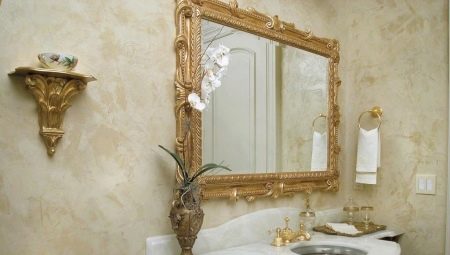Repair in the bathroom should be approached with great responsibility. First of all, it concerns the selection of materials. Both the aesthetics of the room and the durability of the repair will depend on them. To decorate the bathroom, plaster is often used. It can be used as a base (base for painting or installing tiles) or as a finishing decorative cladding. We will figure out what properties high-quality mixes should have, learn about the types of plaster on the construction market, as well as about the rules for choosing and using the material.
General requirements
All building and decoration materials used in the bathroom must be waterproof due to increased humidity in the room. If the plaster mixes do not have this quality, the base will absorb moisture and will begin to swell over time. This will cause the tiles or paint to peel off. The aesthetics of the bathroom will be lost, and you will have to redecorate the room again, which will lead to additional financial costs. Finishing decorative plaster for the bathroom should also be moisture resistant.
The next important requirement is resistance to the formation and development of the fungus. The bathroom is an ideal place for the reproduction of harmful microorganisms. If the material is not resistant to their development, the walls of the bathroom will quickly be covered with mold, dangerous to the health of households.
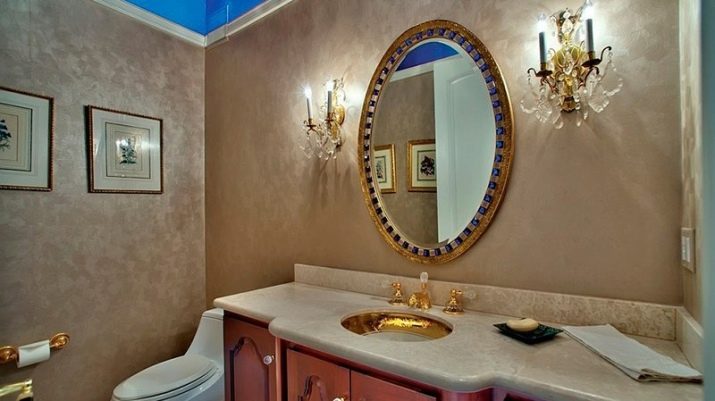
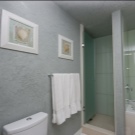
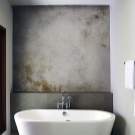
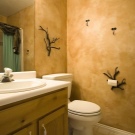
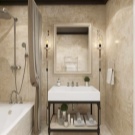
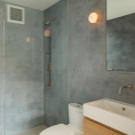
Finishing plaster should be distinguished by high density indicators, which determine the resistance of the decorative layer to mechanical abrasion.The fact is that the walls in the bathroom often have to be washed from dirt, dust, splashes of water and soap drops. With such actions, the porous finish will quickly lose its external presentability - it will begin to wash off and crumble.
Any waterproof plaster in the bathroom must have:
- high adhesion to various types of building materials;
- good vapor permeability;
- high sulfide resistance, which eliminates the risk of chips on the wall surface;
- environmental safety;
- good ductility, due to which the layer does not shrink and does not crack during operation.
High-quality ready-mixes for plastering walls meet all these requirements.
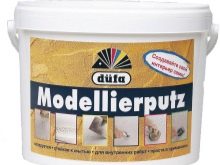
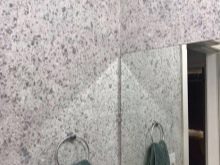
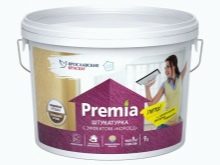
Species overview
The building materials market offers a huge selection of plasters. Mixtures differ in their composition and purpose. To understand what material to give preference, you need to carefully study the advantages and disadvantages of each.
Cement
Plaster made on the basis of cement and sand. Manufacturers often add hydrophobic compounds and plasticizing agents to these mixtures, the task of which is to facilitate the application of the material to the wall surface. Different cement plasters have different brands (the higher the value, the better the mixture and the more expensive it will cost).
Cement-based formulations have several advantages:
- universality - the material can be used for both internal and external works;
- strength, due to which the finish can withstand significant loads, - weighty shelves, cabinets can be attached to the cement layer;
- resistance to sharp temperature extremes;
- long preservation of strength indicators;
- resistance to ignition, fire resistance;
- affordable cost.

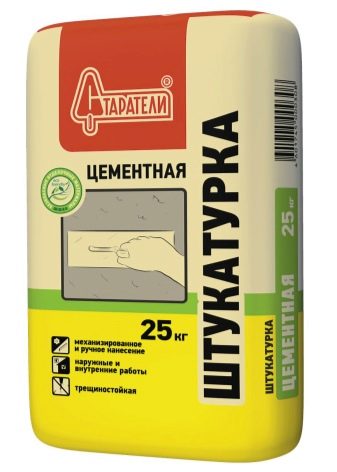
Using a cement mixture, you can even out external wall defects. However, further work will still require additional work on the final alignment of the canvas.
Cement-sand mixture has some disadvantages. These include a large mass of solution, because of which, when laying on the wall, serious loads are created on the structure. The minuses also include the risks of cracks (often formed when the proportions of the mixture and water are not properly observed, in case of violation of the technology for preparing the solution).
Among the shortcomings, consumers note a large consumption of the composition during installation, difficult application and long drying of the solution.

Gypsum
This material is made on the basis of gypsum. Plaster has a fine-grained structure. To increase strength and ductility, various components are added to the composition (most often plasticizers).
Gypsum plaster has several advantages. Consider the main advantages:
- excellent adhesion - the material quickly sets, regardless of the type of base;
- convenient use - the solution easily lays on the surface, levels out quickly and without undue effort;
- good sound and heat barrier - the gypsum layer creates a barrier to the penetration of noise and heat leakage;
- the material does not shrink, due to which later on the walls the formation of cracks and the appearance of other irregularities are excluded;
- economical consumption of the finished solution (especially when applied in a single layer);
- environmental friendliness of the material and its absolute safety for the health of others;
- excellent hygroscopicity - the gypsum layer has the ability to breathe, as well as absorb and give moisture;
- stability and lack of deformation when exposed to excessively low or high temperatures.
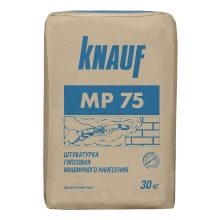
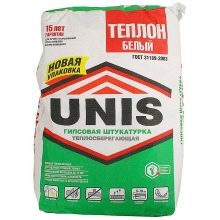
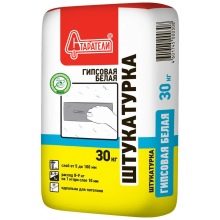
If necessary, gypsum plaster can be removed - it easily lags behind the surface of the walls or ceiling.
The disadvantages of this material include its high cost (compared with cement-sand mixtures), poor resistance to power loads, lower moisture resistance (however, they can plaster the walls in the bathroom).Before applying gypsum plaster, a mandatory surface treatment with a primer is required.
The gypsum-based material has a different structure. Mixtures are coarse, medium and fine grains. The former is suitable for removing holes in the walls, the latter for leveling the base.
Medium-sized plaster can be used to eliminate large irregularities, and for applying a layer under the finish.
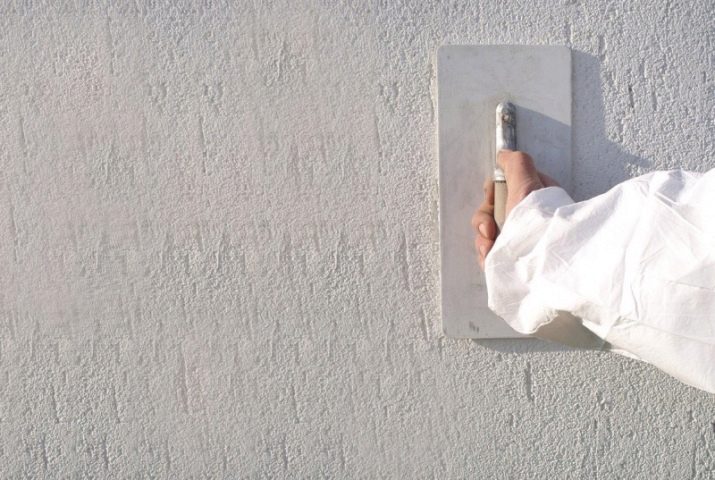
Sanitizing
This plaster is designed to prepare the surface for subsequent finishing. The composition of such material includes:
- modifier components;
- various additives;
- plasticizing substances.
Thanks to these additional components, the solution becomes plastic, and the layer is hydrophobic and more durable.
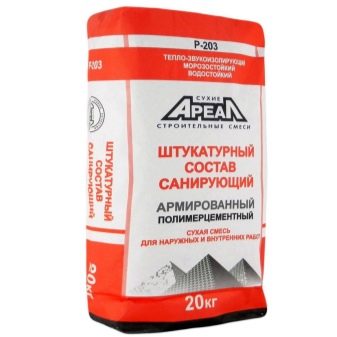
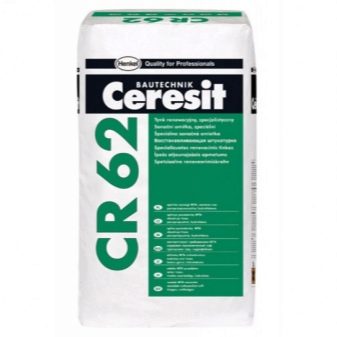
The main features of sanitizing plaster:
- ensuring isolation of the finish lining from moisture entering through the external structures;
- increased vapor permeability of the bathroom, due to which a favorable microclimate is established in the room;
- creation of an elastic coating on which cracks do not appear as a result of shrinkage over time;
- increased sulfate resistance.
Sanitary plastering is an ideal solution in cases when it is planned to plaster surfaces for the subsequent installation of tiles, paints or wallpaper.
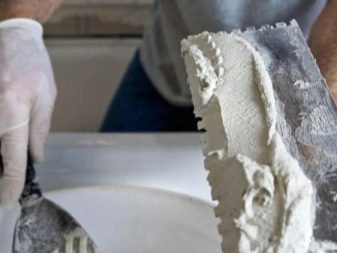
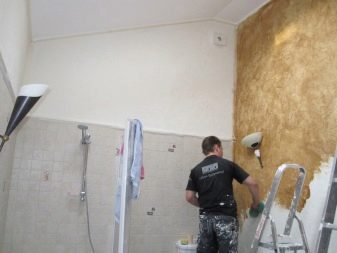
Decorative
This is a relatively new type of finish that has already gained respect from the consumers who use it. Such material is used to decorate the space. With it, you can make a stylish and exclusive repair. Decorative plasters can be:
- mineral (base - cement with marble or granite chips);
- silicone (base - silicone resin, additional components - glass or marble chips);
- acrylic (made on the basis of polymer resins with the addition of glass or marble chips, as well as other types of fillers);
- silicate (finely divided mineral substances are used as filler, and liquid glass acts as the basis).


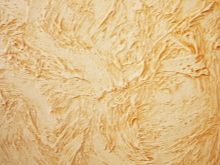
Distinguish decorative plaster textured, structural, Venetian and mineral.
This finish is durable and durable. The solution, applied with the requirements of the technological process, forms a layer resistant to mechanical stress, shedding and cracking. He is not afraid of moisture, if necessary, it is allowed to wash it with a soft cloth and soapy water.
Decorative plaster allows you to mask surface flaws - dents, tubercles, cracks. In addition, the material is considered universal - it can be applied to wood, brick, concrete, metal and other types of substrates. The advantages include frost and moisture resistance, as well as safety for health due to the absence of harmful components in the composition.
The main disadvantages of decorative plaster include its high cost and complexity of installation. To surface the surface with this material, certain skills, forces and time will be required. Often, many consumers trust the facing work to hired craftsmen, as a result of which the final cost of repairs increases.
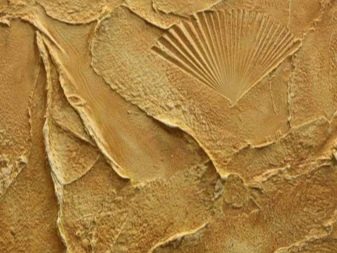
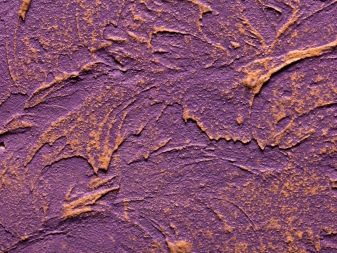
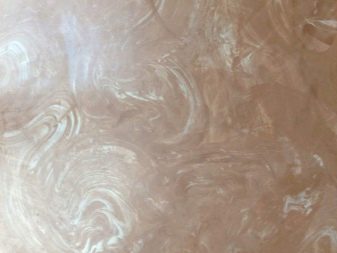
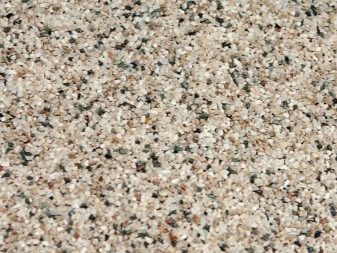
Manufacturers
Moisture-resistant plaster for decorating bathrooms is produced by many domestic and foreign companies. Among them are many manufacturers offering consumers high quality products at a bargain price.
- Profit The company produces water-repellent plasters "Hydrophobic" (cement-sand) and "Barrier" (cement-polymer). Both materials have medium grit. The purpose of the composition is the alignment of various types of bases. The prepared solution must be applied immediately after preparation (after 3 hours the mass is very thick, which complicates its use). The final strength of the layer reaches after 27 days.
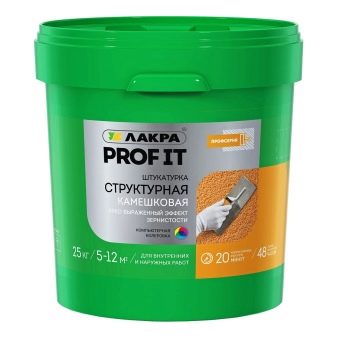
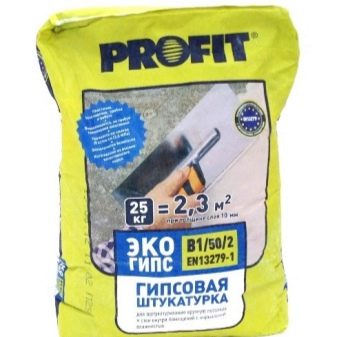
- EU The manufacturer offers TT30 plaster for plastering walls and ceilings in the bathroom.The mixture is based on gray cement. This plaster does not crack, does not shrink, has excellent moisture repellent properties. This is one of the budget solutions for leveling the foundations and preparing them for the finish. The prepared solution is viable for 2 hours. Consumption per 1 square. m is 8-9 kg (with a coating thickness of not more than 5 mm).
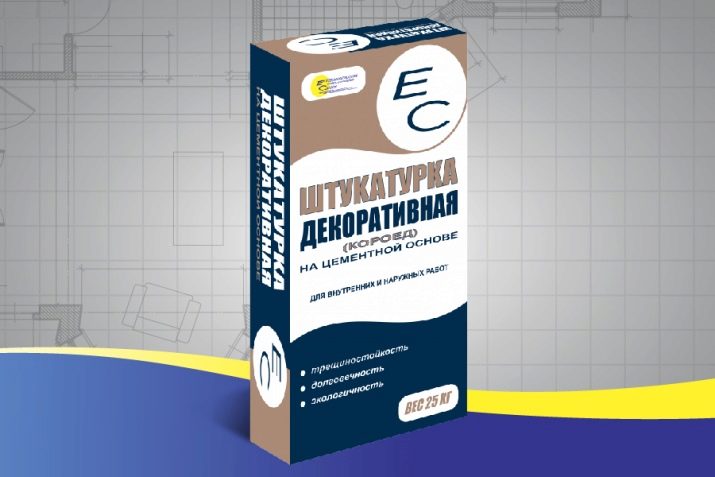
- Ceresit. The manufacturer offers moisture resistant polymer cement plaster CR 65. The composition is resistant to alkalis and salts. Easy to apply. Suitable for all types of substrates except plaster. Dries within 3 days.

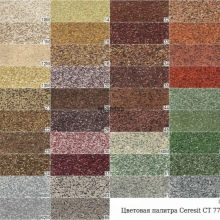
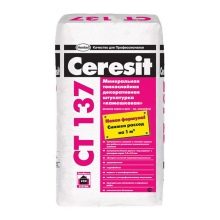
- Consolit. A multicomponent solution including cement, lime and various polymers. Mass consumption per 1 square. m is from 8 to 10 kg. The mass remains viable for 2-3 hours, after which it begins to harden. It takes 5 to 8 days to dry the layer.
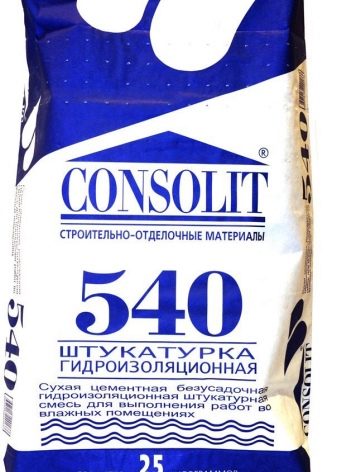
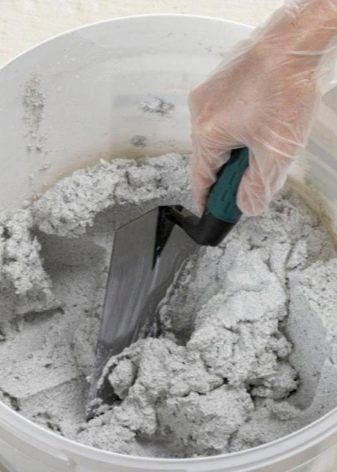
- UNIS. The manufacturer produces two varieties of stucco mixture - this is Teplon and Silin. The first is made on the basis of gypsum and is suitable only for leveling the surface under the tile. The second is made of a non-shrinking type of cement, designed for all types of substrates. Mixtures are water resistant, ductile and durable. The consumption of gypsum plaster is 6 kg per 1 m, cement up to 12 kg. The layer dries within 5 days.



Known manufacturers of water-repellent plasters include: Knauf, Vetonit, Azolit, Magma.
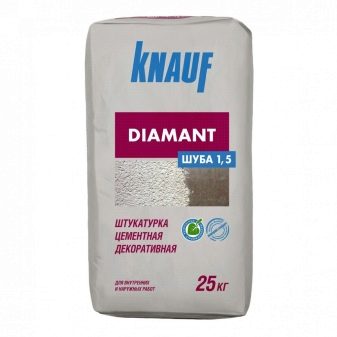
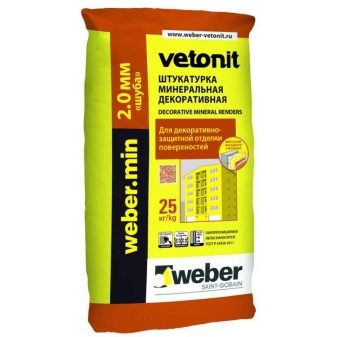
How to choose?
A large assortment of dry compositions for plastering the bathroom makes them difficult to choose. To buy a quality product with optimal performance, it is important to consider several nuances.
Experienced finishers are advised to give preference to cement-sand mortars. It is best that they do not contain lime. This component increases the drying speed and ductility of the finished solution, but at the same time reduces the waterproofing properties.
It is advisable to refuse the use of gypsum plasters. The fact is that gypsum is able to quickly absorb moisture, and even various additives are not able to solve this problem. Gypsum plaster in the bathroom during operation will become unusable faster than sand and cement.
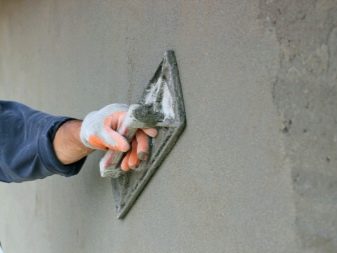
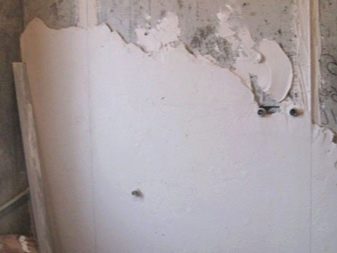
Pay attention also to the information from the manufacturer indicated on the packaging of the goods. The dry mixture must be moisture resistant. You should study for what basis the composition is suitable and whether it can be used for subsequent installation of tiles. It is important to check product expiration dates. There are times when goods with an expired shelf life are on the shelves or this date is coming to an end. Fresh mixtures should be purchased, as old ones lose their performance.
It is necessary to pay attention to the manufacturer. The mistake of some consumers is the choice of budget materials of dubious production. In most cases, such plaster mixes do not meet the requirements stated by the manufacturer. They quickly lose their properties, which is why the bathroom may soon need regular repairs.
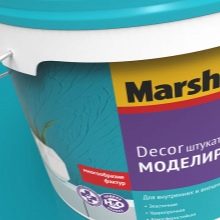
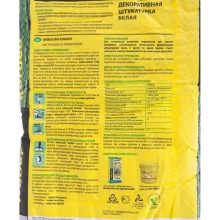
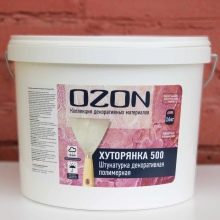
How to use?
The process of plastering walls cannot be called complicated if we are not talking about decorative plaster. In order to produce quality work, it will take effort and compliance with certain subtleties. Allowed oversights can easily cross out all the work, so you should not rush into this matter. Plastering walls consists of several stages that must be followed by the master. Let's consider them in more detail.
Preparation
Before applying the solution, any base must be prepared. To do this, remove paint from the surface, the old layer of plaster, lime or other types of finishes. Cleaning should be done efficiently, dismantling obsolete materials to a hard base (for example, concrete, aerated concrete or brick). For work, scrapers, spatulas, hammers are used.In some cases, a grinder or drill may be required.
You should not neglect the preparatory phase. Any finishing coating during operation weakens, and the cement or gypsum mortar applied to it creates an enormous load. Because of this, the plaster may fall off along with the old finish, and all work will have to be repeated first.
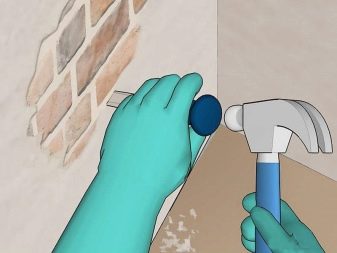
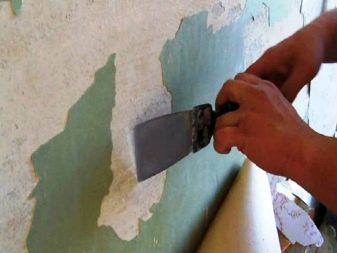
All cracks at the base should be primed and sealed with cement-sand mortar. It is necessary to pay attention to the holes through which engineering communications pass. Dust and debris must be removed from them. Too large holes must be sealed with pieces of brick and fixed with a cement mortar.
If there are grease stains on the surface, they must be removed. Plaster does not adhere to these types of contaminants. If necessary, the wall is washed from dust and dirt. Subsequent work should be started when the surface is completely dry. A clean and dry base should be coated with a primer.

Solution preparation
The technology of mixing the mixture for plastering is described in detail in the instructions for the material. However, there are general rules that are typical for most types of mixtures:
- cold water is poured into a clean container and the plaster is gradually added (in the ratio indicated on the packaging by the manufacturer);
- the solution is kneaded with a construction mixer or other hand tool (the mass should be uniform, without lumps);
- the solution is allowed to “rest” for 10 minutes, after which it is mixed again.
The mixture should be diluted in small portions, since the finished solution is not stored for a long time. After half an hour, it will begin to harden, and after a few hours it will be impossible for them to work.
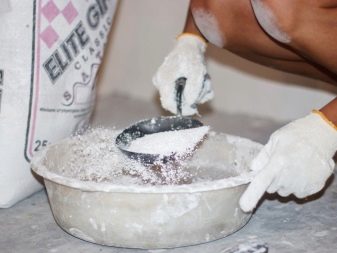

Material application
Plastering surfaces can be done in two ways: automatic or mechanized. The first method involves the use of specialized equipment. The result is an even layer without flaws. The automated installation method is practically not used for repairs in bathrooms. Due to the high cost of equipment, it makes no sense to purchase it for solving domestic problems.
The mechanical method involves applying the plaster manually. In this case, 3 layers are applied.
- Starting. The surface of the wall is wetted with water using a spray gun. After that, a liquid plaster mass up to 5 mm thick is poured onto the base.
- Draft. Plaster of medium density is poured onto the starting layer, the mass is leveled, and its excess is removed.
- Finishing. A plaster of 2 mm thickness is applied to the hardened and moistened draft layer. After the layer begins to harden (no need to wait for the surface to completely dry), it must be sanded with a mechanical or electric brush.
A primer is applied to the polished surface, and after it dries, the finish lining is performed.
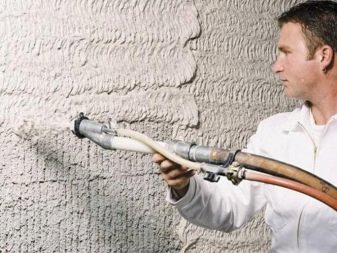
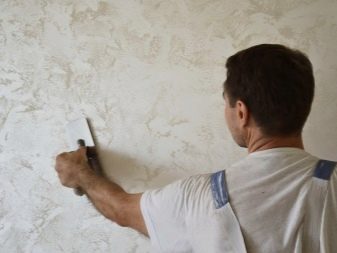
Examples in the interior
The plastered surface in the bathroom for painting, tile or other cladding always looks the same - these are gray, even walls without flaws. The rooms decorated with decorative plaster look much more luxurious and interesting. The final result will depend not only on the selected composition, but also on the professionalism of the master. Using the decorative composition, you can exclusively and tastefully design any bathroom.
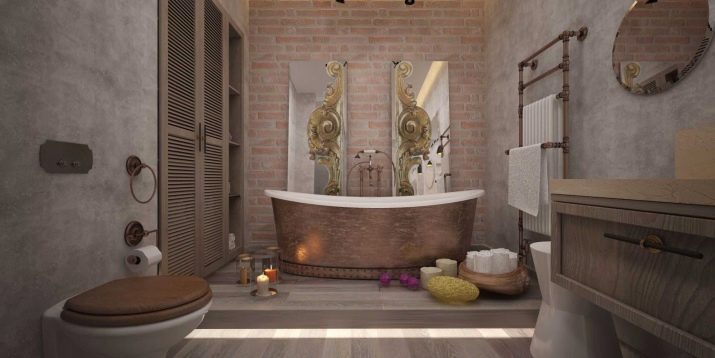

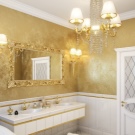
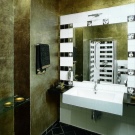
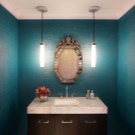
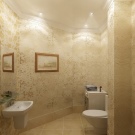
Let's look at some interesting examples that someone might want to adopt.
- Venetian plaster. Thanks to the use of this mass, it is possible to obtain a surface imitating natural minerals and stones (for example, amethyst or onyx).
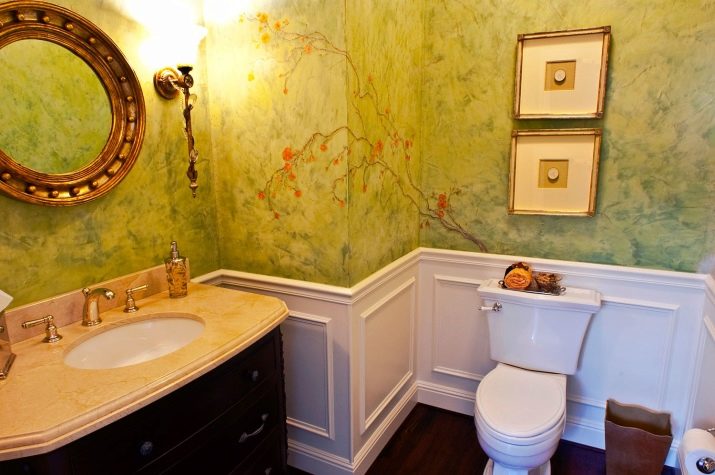
- Simulated mixes. These varieties of plasters allow you to make a texture surface. The compositions can have a different color, making it easy to choose a gamut according to the general style of the interior.
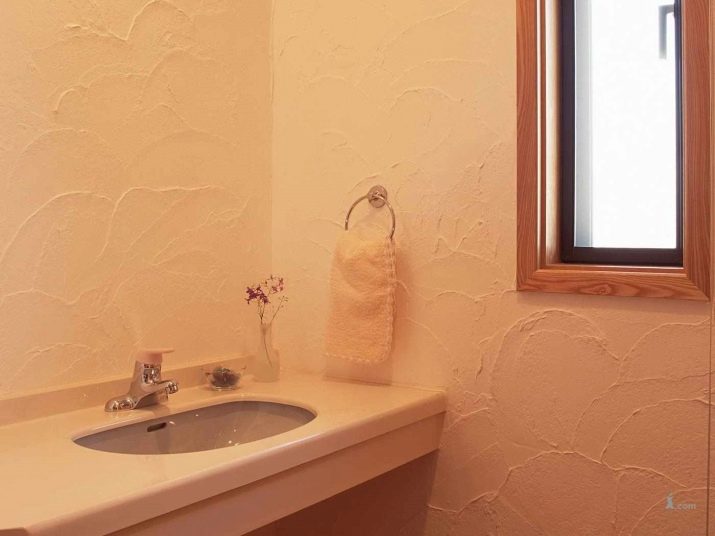
- The bark beetle. Stucco texture texture, which added fine marble chips.Thanks to inclusions on the surface, you can create reliefs that visually resemble damage by a woodcutter.
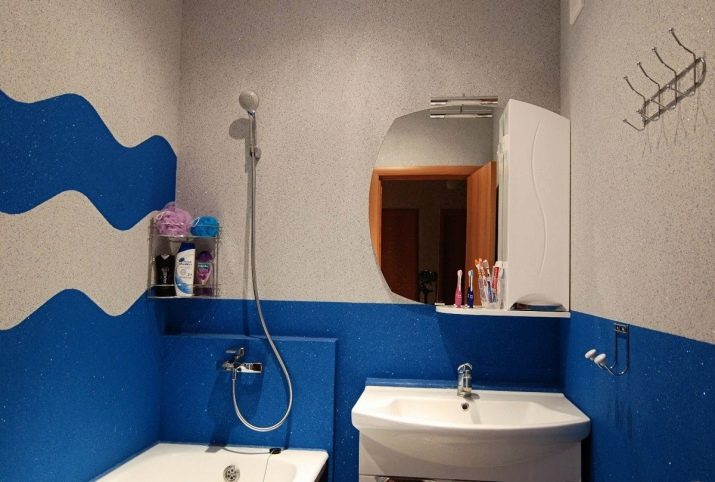
Choosing the right plaster for the bathroom is a responsible task. An important thing is also the application of the composition to the walls and ceiling. If plastering for painting or installing tiles can be done independently, then facing the decorative composition is best entrusted to professional craftsmen. Such a finish will require a lot of time, effort, knowledge and experience.
See below for more details.
